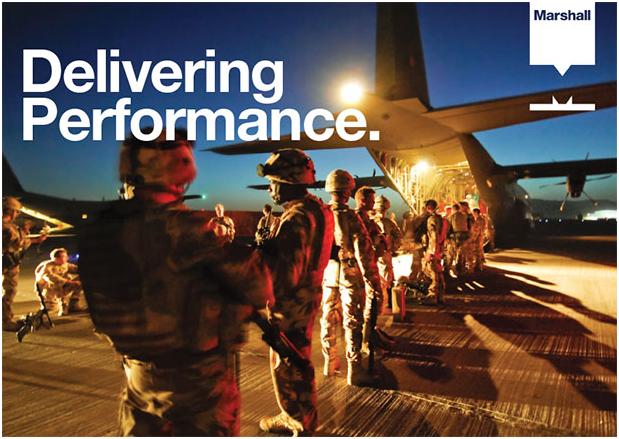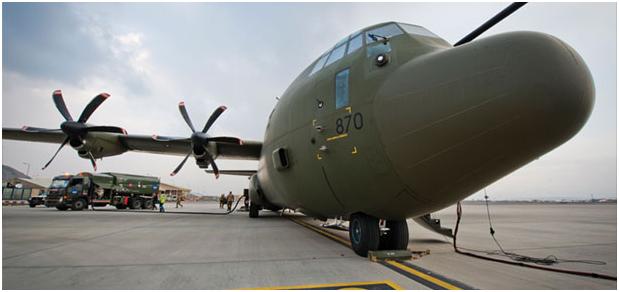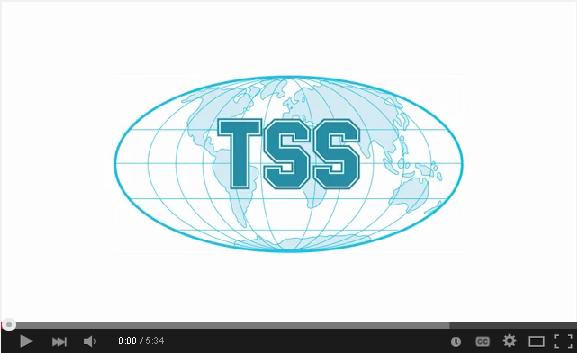
The Hercules Integrated Operational Support (HIOS) programme, for which Marshall is the contract prime, has made the C-130 one of the United Kingdom’s Royal Air Force’s most cost-effective transport platforms by delivering unprecedented aircraft availability. HIOS is a highly effective, risk-reducing and incentivized partnership between the UK Ministry of Defence (MoD), Marshall Aerospace and Defence Group, Lockheed Martin and Rolls-Royce. Delivered under a long-term contract, HIOS covers aircraft maintenance and technical support (for which Marshall has the lead), supply chain management (for which Lockheed Martin has the lead) and propulsion management (for which Rolls-Royce has the lead).
Essentially, HIOS is a form of Performance-Based Logistics (PBL) programme, for maintaining equipment, but it spares the MoD from dealing with multiple providers and by focussing on the end objective: the RAF’s operational capabilities.
So how did HIOS come about?
Pre-HIOS, the MoD employed a team of people to manage the continued airworthiness of the RAF’s C-130s. This team interacted with numerous specialists to manage all aspects of maintaining and modifying the fleet, while supporting operations and exercises to the standards required by different authorities both inside and outside the military environment.
Recognising the inefficiency in this task, the UK MoD followed the US model and created multi-disciplinary groups – or Integrated Project Teams (IPTs) – to bring all those with responsibility for supporting the C-130 together under one leader. However, as requirements and complexities grew so too did the size of the IPT, and it soon became apparent that much of the work performed by the IPTs could be performed more cost-effectively by contractors; and especially the Original Equipment Manufacturers (OEMs).
This, along with other factors, led to the adoption of a number of PBL-type contracts (for the Hercules and other platforms), where each contract typically related to how a provider would be responsible for ensuring the high availability of a single subsystem, LRU or major component. Accordingly, as the numerous providers assumed the risk of delivery, the MoD became a ‘contract monitor’; responsible for defining requirements, measuring the deliverables against KPIs and resourcing the programme.

However, such PBL arrangements can have limitations. For example, failure, by any single provider, can often be attributed to the non-performance of one or more of the other providers, or buyers, in the supply chain. An Integrated Operational Support (IOS) saves the buyer from having to interface with multiple providers as it becomes the prime contractor’s responsibility to manage the numerous contractors.
Both PBL and IOS require all parties to adopt a less confrontational approach to achieving goals – and are all about constructive attitudes, collaboration and cooperation – but the contractual difference is that IOS is all about paying for performance; rather than transactional goods or services.
HIOS represents the first implementation of such an IOS, and the HIOS team debuted in 2006.
Most recently, and thanks to the structure and procedures already in place for HIOS, ‘Operation Weatherman’ quickly returned to service five of the RAF’s C-130s, stationed at Kandahar Airfield, which were damaged during a severe hailstorm in April 2013. The RAF awarded Marshall a Chief of the Air Staff’s Commendation in recognition of how it dealt with the impact of such a damaging weather event.
In summary, HIOS is working extremely well. Reasons include: simple KPIs focus on the needs of the end-user (the RAF); a long-term contact that encourages investment and continuous improvement by and within the HIOS team; light governance (with no more than two layers) enabling decisions to be made quickly; proximity to the RAF (e.g. at Brize Norton) to give operational focus / immediacy; an agile commercial structure to react quickly to change; incentives that reinforce positive behaviour; and a unwavering focus on ‘Outputs’ (particularly availability) and not ‘Inputs’, such as spares, GFX, people and hangars.
Moreover, though first applied to the RAF’s Hercules fleet, the IOS model can be applied to any platform, for any operator.



